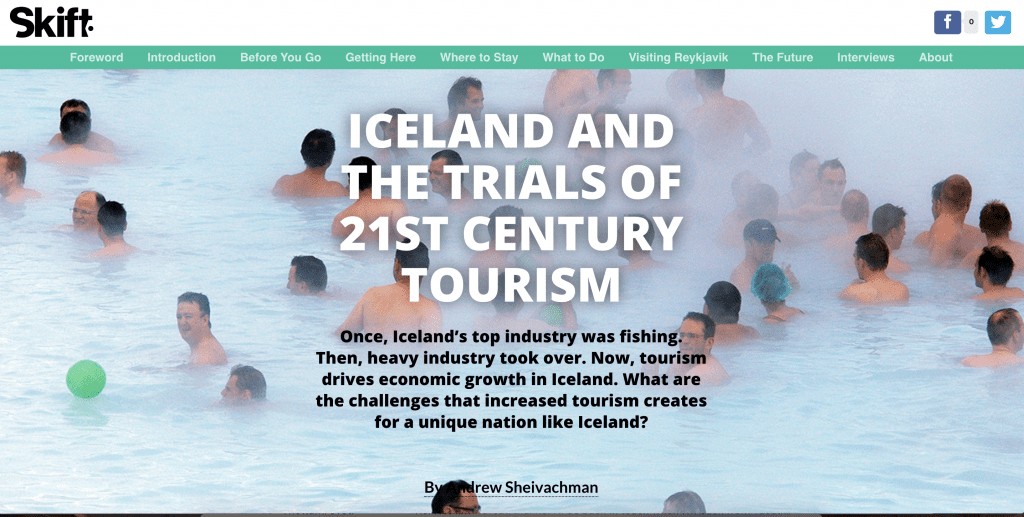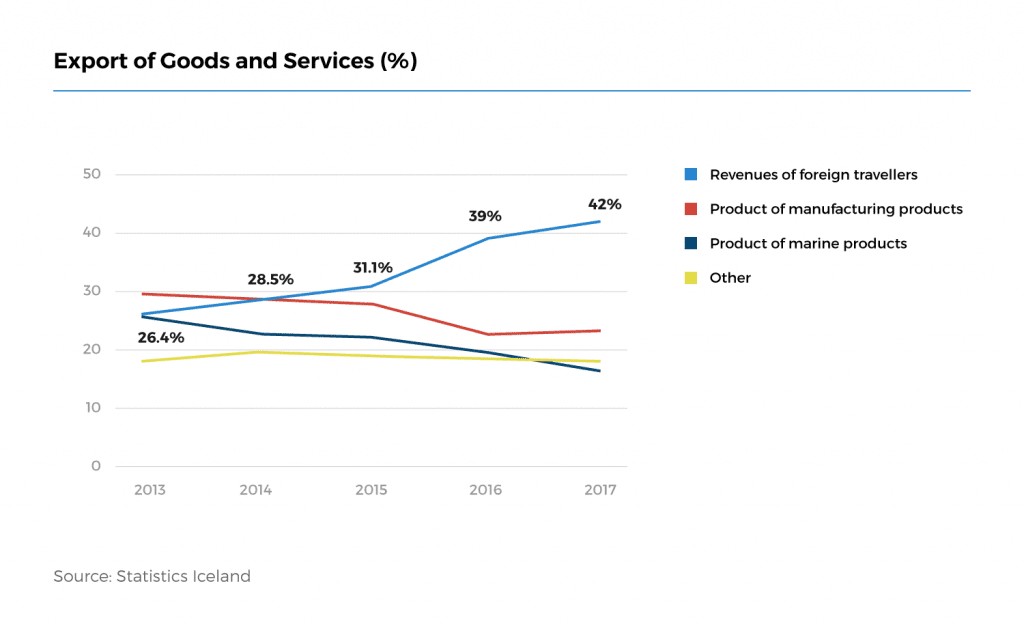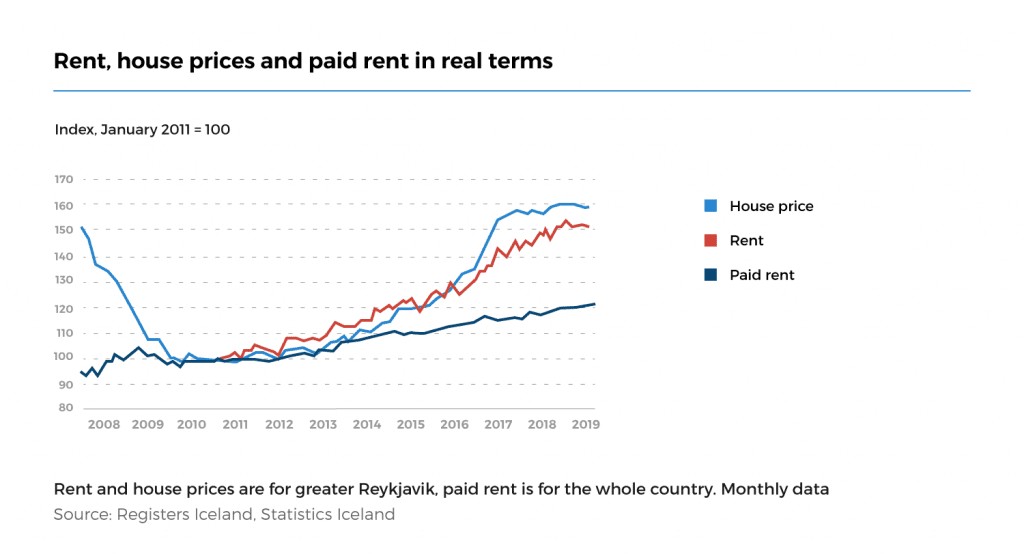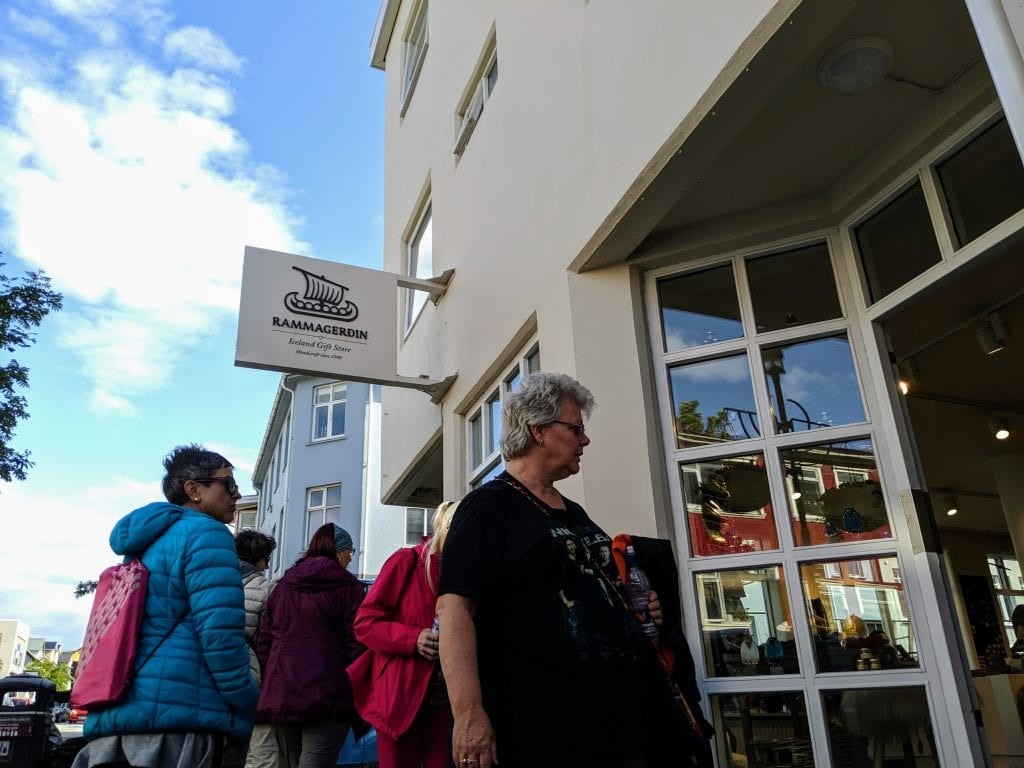Iceland’s tourism economy has significantly impacted its growth, transforming the nation into a popular travel destination. If you’re planning a trip to Vietnam, SIXT.VN offers convenient travel solutions. Explore Vietnam’s natural beauty and cultural treasures with ease using our services, ensuring a memorable journey, enriched travel experiences and unforgettable vacations.
1. What Role Does Iceland Tourism Play in the National Economy?
Iceland’s tourism is a vital contributor to its national economy, significantly boosting the gross domestic product (GDP) and acting as a key driver for economic growth. According to Statistics Iceland, tourism revenue accounts for 42% of Iceland’s economy, highlighting its substantial impact. Tourism supports various sectors, including hospitality, transportation, and local businesses, making it essential for Iceland’s financial well-being.
How Did Iceland’s Tourism Sector Evolve Over the Years?
Iceland’s tourism sector has undergone a remarkable transformation over the years:
- Early Stages: Initially, Iceland relied on traditional industries like fishing and manufacturing.
- Post-Financial Crisis (2008): The financial crisis in 2008 led to a search for new economic drivers, and tourism emerged as a viable option.
- Volcanic Eruption (2010): The eruption of Eyjafjallajökull in 2010 unexpectedly put Iceland on the global map, attracting attention to its unique landscapes.
- Growth Period: From 2010 onwards, tourism grew exponentially, becoming Iceland’s largest industry.
What is the Current State of Iceland’s Tourism Economy?
As of late 2010s, Iceland’s tourism economy faces challenges due to several factors:
- Strong Króna: A strong Icelandic króna has made the country more expensive for tourists.
- Airline Failures: The collapse of Wow Air reduced affordable flight options, impacting tourist arrivals.
- Global Events: Events like the Boeing 737 Max grounding affected air travel and added to the economic downturn.
Despite these challenges, tourism remains a crucial part of Iceland’s economy, with ongoing efforts to stabilize and diversify the sector.
What is the Environmental Impact of Iceland Tourism?
Tourism has significant environmental impacts on Iceland:
- Glacier Melting: Increased tourism contributes to the melting of glaciers due to climate change.
- Ecosystem Damage: High foot traffic damages fragile ecosystems.
- Pollution: Increased waste and pollution threaten natural resources.
To mitigate these issues, Iceland promotes sustainable tourism practices, including encouraging responsible behavior among tourists and investing in environmental protection.
What are the Key Challenges Facing Iceland Tourism?
Iceland’s tourism industry faces several challenges:
- Seasonality: Over-reliance on summer tourism leads to imbalances throughout the year.
- Infrastructure: Limited infrastructure struggles to support the growing number of tourists.
- Economic Factors: Currency fluctuations and airline instability affect tourism revenue.
To address these challenges, Iceland is focusing on year-round tourism promotion, infrastructure development, and economic diversification to ensure sustainable growth.
 Iceland's unique landscapes attracted global attention
Iceland's unique landscapes attracted global attention
2. How Has Overtourism Affected Iceland’s Natural Resources?
Overtourism has placed significant strain on Iceland’s natural resources, leading to concerns about sustainability and environmental preservation. The influx of tourists has resulted in damage to delicate ecosystems, increased pollution, and pressure on infrastructure. According to a report by the Iceland Tourist Board, popular sites have experienced considerable wear and tear, necessitating restoration efforts. Sustainable tourism practices and responsible travel behavior are essential to mitigate these adverse effects.
What are the Environmental Consequences of Increased Tourism in Iceland?
Increased tourism in Iceland has led to several environmental consequences:
- Erosion and Habitat Destruction: High tourist traffic causes erosion and damages natural habitats.
- Waste Management Issues: Increased waste generation puts strain on waste management systems.
- Pollution: Air and water pollution from transportation and tourism activities affects environmental quality.
These consequences necessitate implementing sustainable tourism practices to protect Iceland’s natural resources.
How Does Iceland Balance Tourism and Environmental Conservation?
Iceland balances tourism and environmental conservation through various strategies:
- Sustainable Tourism Policies: Implementing policies that promote responsible travel and reduce environmental impact.
- Protected Areas: Designating and managing protected areas to preserve natural habitats and landscapes.
- Eco-Friendly Practices: Encouraging eco-friendly practices among tourism operators and visitors.
These efforts aim to ensure that tourism benefits the economy without compromising the environment.
What Measures Are Being Taken to Promote Sustainable Tourism in Iceland?
Several measures are being taken to promote sustainable tourism in Iceland:
- Certification Programs: Implementing certification programs for tourism businesses that adhere to sustainable practices.
- Education and Awareness: Raising awareness among tourists about responsible travel behavior.
- Infrastructure Development: Investing in infrastructure that minimizes environmental impact.
These measures help ensure that tourism in Iceland is sustainable and environmentally responsible.
How Can Tourists Contribute to Sustainable Tourism in Iceland?
Tourists can contribute to sustainable tourism in Iceland in several ways:
- Respecting Nature: Staying on marked trails, avoiding littering, and respecting wildlife.
- Supporting Local Businesses: Patronizing local businesses that prioritize sustainability.
- Conserving Resources: Using water and energy responsibly and minimizing waste.
By adopting these practices, tourists can help preserve Iceland’s natural beauty for future generations.
 Chart showing international visitation growth in Iceland
Chart showing international visitation growth in Iceland
3. How Does the Icelandic Government Manage Tourism Development?
The Icelandic government plays a crucial role in managing tourism development through strategic planning, regulatory frameworks, and investment in infrastructure. Visit Iceland is responsible for promoting sustainable tourism and ensuring that development aligns with national goals. The government focuses on balancing economic benefits with environmental protection, implementing policies to mitigate negative impacts and enhance the visitor experience.
What Policies and Regulations Govern Tourism in Iceland?
Several policies and regulations govern tourism in Iceland:
- Tourism Act: The Tourism Act provides a framework for sustainable tourism development and management.
- Environmental Regulations: Environmental regulations protect natural resources and limit the impact of tourism activities.
- Planning Laws: Planning laws regulate land use and development to ensure sustainable tourism infrastructure.
These policies and regulations aim to balance economic growth with environmental protection.
How Does the Government Support Sustainable Tourism Initiatives?
The government supports sustainable tourism initiatives through:
- Funding and Grants: Providing financial support for projects that promote sustainable practices.
- Incentives: Offering incentives to businesses that adopt eco-friendly technologies and practices.
- Partnerships: Collaborating with stakeholders to develop and implement sustainable tourism strategies.
These initiatives help ensure that tourism in Iceland is environmentally and economically sustainable.
What Role Does Visit Iceland Play in Tourism Management?
Visit Iceland plays a key role in tourism management by:
- Promotion and Marketing: Promoting Iceland as a sustainable tourism destination.
- Information and Education: Providing information and education to tourists and businesses about responsible travel.
- Coordination: Coordinating efforts among stakeholders to ensure sustainable tourism development.
Visit Iceland’s efforts help maintain Iceland’s reputation as a premier sustainable tourism destination.
How Does Iceland Address Infrastructure Needs for Tourism?
Iceland addresses infrastructure needs for tourism by:
- Investment in Transportation: Improving roads, airports, and public transportation systems.
- Development of Accommodation: Supporting the development of sustainable accommodation options.
- Enhancement of Facilities: Enhancing facilities at tourist sites to improve the visitor experience.
These investments help accommodate the growing number of tourists while minimizing environmental impact.
 Graph showing tourism VAT turnover in Iceland
Graph showing tourism VAT turnover in Iceland
4. What Impact Has the Collapse of Wow Air Had on Iceland’s Tourism Economy?
The collapse of Wow Air had a significant impact on Iceland’s tourism economy, leading to a decrease in tourist arrivals and revenue. Wow Air, a low-cost carrier, had made Iceland more accessible and affordable for many travelers. Its sudden bankruptcy disrupted travel plans and reduced the overall capacity for flights to and from Iceland. This resulted in a decline in tourist spending and affected businesses reliant on tourism.
How Did Wow Air Contribute to Iceland’s Tourism Boom?
Wow Air contributed significantly to Iceland’s tourism boom by:
- Affordable Flights: Offering low-cost flights that made Iceland accessible to budget travelers.
- Increased Connectivity: Expanding flight routes to and from Iceland, increasing international connectivity.
- Stimulating Demand: Stimulating demand for travel to Iceland through aggressive marketing campaigns.
Wow Air’s contributions helped transform Iceland into a popular tourist destination.
What Were the Immediate Consequences of Wow Air’s Bankruptcy?
The immediate consequences of Wow Air’s bankruptcy included:
- Flight Cancellations: Thousands of flight cancellations stranded passengers and disrupted travel plans.
- Reduced Capacity: Reduced flight capacity led to higher airfares and fewer tourists.
- Economic Losses: Businesses reliant on tourism experienced significant economic losses.
These consequences highlighted the vulnerability of Iceland’s tourism sector to airline instability.
How Has Iceland’s Tourism Sector Adapted to Wow Air’s Absence?
Iceland’s tourism sector has adapted to Wow Air’s absence by:
- Icelandair Expansion: Icelandair expanded its services to fill the gap left by Wow Air.
- Attracting New Airlines: Efforts to attract new airlines to serve Iceland’s market.
- Focus on High-Value Tourists: Shifting focus to attracting high-value tourists who spend more.
These strategies have helped mitigate the negative impacts of Wow Air’s collapse.
What Lessons Has Iceland Learned from Wow Air’s Failure?
Iceland has learned several lessons from Wow Air’s failure:
- Diversification: The need to diversify the tourism sector to reduce reliance on a single airline.
- Risk Management: The importance of effective risk management and contingency planning.
- Sustainability: The necessity of sustainable growth that is not solely dependent on low-cost carriers.
These lessons are guiding Iceland’s efforts to build a more resilient and sustainable tourism economy.
 Chart showing hotel stays vs Airbnb stays in Iceland
Chart showing hotel stays vs Airbnb stays in Iceland
5. What Strategies Can Iceland Employ to Ensure Long-Term Sustainability of Its Tourism Economy?
To ensure the long-term sustainability of its tourism economy, Iceland can employ several strategies, including diversifying tourism offerings, promoting responsible travel, and investing in infrastructure. By spreading tourism across different regions and seasons, Iceland can reduce pressure on popular sites and create a more balanced economy. Encouraging responsible behavior among tourists, such as respecting nature and supporting local businesses, can help mitigate environmental impacts. Additionally, investing in infrastructure improvements can enhance the visitor experience and support sustainable growth.
How Can Iceland Diversify Its Tourism Offerings?
Iceland can diversify its tourism offerings by:
- Promoting Off-Season Travel: Encouraging tourists to visit during the shoulder seasons (spring and autumn) and winter.
- Developing New Attractions: Creating new attractions and activities to spread tourists across different regions.
- Focusing on Niche Markets: Targeting niche markets such as adventure travel, wellness tourism, and cultural experiences.
Diversifying tourism offerings can reduce pressure on popular sites and create a more balanced economy.
What Role Does Community Involvement Play in Sustainable Tourism?
Community involvement is crucial for sustainable tourism because:
- Local Knowledge: Local communities have valuable knowledge about the environment and culture.
- Economic Benefits: Tourism can provide economic benefits to local communities, supporting livelihoods.
- Cultural Preservation: Community involvement helps preserve local culture and traditions.
Engaging local communities ensures that tourism is sustainable and benefits both tourists and residents.
How Can Iceland Use Technology to Manage Tourism?
Iceland can leverage technology to manage tourism by:
- Smart Tourism Apps: Developing apps that provide real-time information about tourist sites, traffic, and environmental conditions.
- Data Analytics: Using data analytics to monitor tourist flows and identify areas needing management.
- Online Booking Systems: Implementing online booking systems to manage visitor numbers at popular attractions.
Technology can help Iceland manage tourism more efficiently and sustainably.
What International Collaborations Can Support Iceland’s Tourism Goals?
International collaborations can support Iceland’s tourism goals by:
- Sharing Best Practices: Collaborating with other countries to share best practices in sustainable tourism management.
- Joint Marketing Campaigns: Participating in joint marketing campaigns to promote Iceland as a sustainable tourism destination.
- Funding Opportunities: Accessing international funding for sustainable tourism projects.
International collaborations can help Iceland achieve its tourism goals more effectively.
Navigating Iceland’s tourism landscape requires strategic planning, sustainable practices, and community engagement. By embracing these approaches, Iceland can maintain its allure as a premier travel destination while safeguarding its environment and economy.
 Photograph of tourists exploring downtown Reykjavik
Photograph of tourists exploring downtown Reykjavik
FAQ about Iceland Tourism Economy
1. Why is tourism so important to Iceland’s economy?
Tourism is crucial to Iceland’s economy, accounting for a significant portion of the GDP and supporting various sectors like hospitality and transportation. According to Statistics Iceland, tourism revenue accounts for 42% of Iceland’s economy.
2. How has overtourism impacted Iceland’s natural environment?
Overtourism has strained Iceland’s natural resources, leading to ecosystem damage, increased pollution, and infrastructure pressure. Responsible travel behavior and sustainable practices are essential to mitigate these effects.
3. What measures does the Icelandic government take to manage tourism development?
The Icelandic government manages tourism development through strategic planning, regulations, and infrastructure investment. Visit Iceland focuses on promoting sustainable tourism and aligning development with national goals.
4. What was the impact of Wow Air’s collapse on Iceland’s tourism sector?
The collapse of Wow Air led to decreased tourist arrivals and revenue, disrupting travel plans and affecting businesses reliant on tourism. Iceland has adapted by expanding Icelandair’s services and attracting new airlines.
5. How can Iceland ensure the long-term sustainability of its tourism economy?
Iceland can ensure long-term sustainability by diversifying tourism offerings, promoting responsible travel, and investing in infrastructure to balance economic benefits with environmental protection.
6. What are some strategies for tourists to contribute to sustainable tourism in Iceland?
Tourists can contribute by respecting nature, supporting local businesses, conserving resources, and following guidelines for responsible travel.
7. How does Iceland balance the economic benefits of tourism with the need for environmental conservation?
Iceland balances economic benefits with environmental conservation by implementing sustainable tourism policies, designating protected areas, and promoting eco-friendly practices.
8. What role does Visit Iceland play in managing and promoting tourism?
Visit Iceland promotes Iceland as a sustainable tourism destination, provides information and education to tourists, and coordinates efforts among stakeholders for sustainable development.
9. How can technology be used to manage tourism in Iceland?
Technology can manage tourism in Iceland through smart tourism apps, data analytics to monitor tourist flows, and online booking systems for managing visitor numbers.
10. What international collaborations support Iceland’s tourism goals?
International collaborations support Iceland’s goals through sharing best practices, joint marketing campaigns, and accessing funding for sustainable tourism projects.
For those inspired to explore Vietnam, SIXT.VN offers a range of services to enhance your travel experience. Whether you need airport transfers, hotel bookings, or guided tours, SIXT.VN provides convenient and reliable solutions to make your trip unforgettable.
Address: 260 Cau Giay, Hanoi, Vietnam
Hotline/Whatsapp: +84 986 244 358
Website: SIXT.VN



